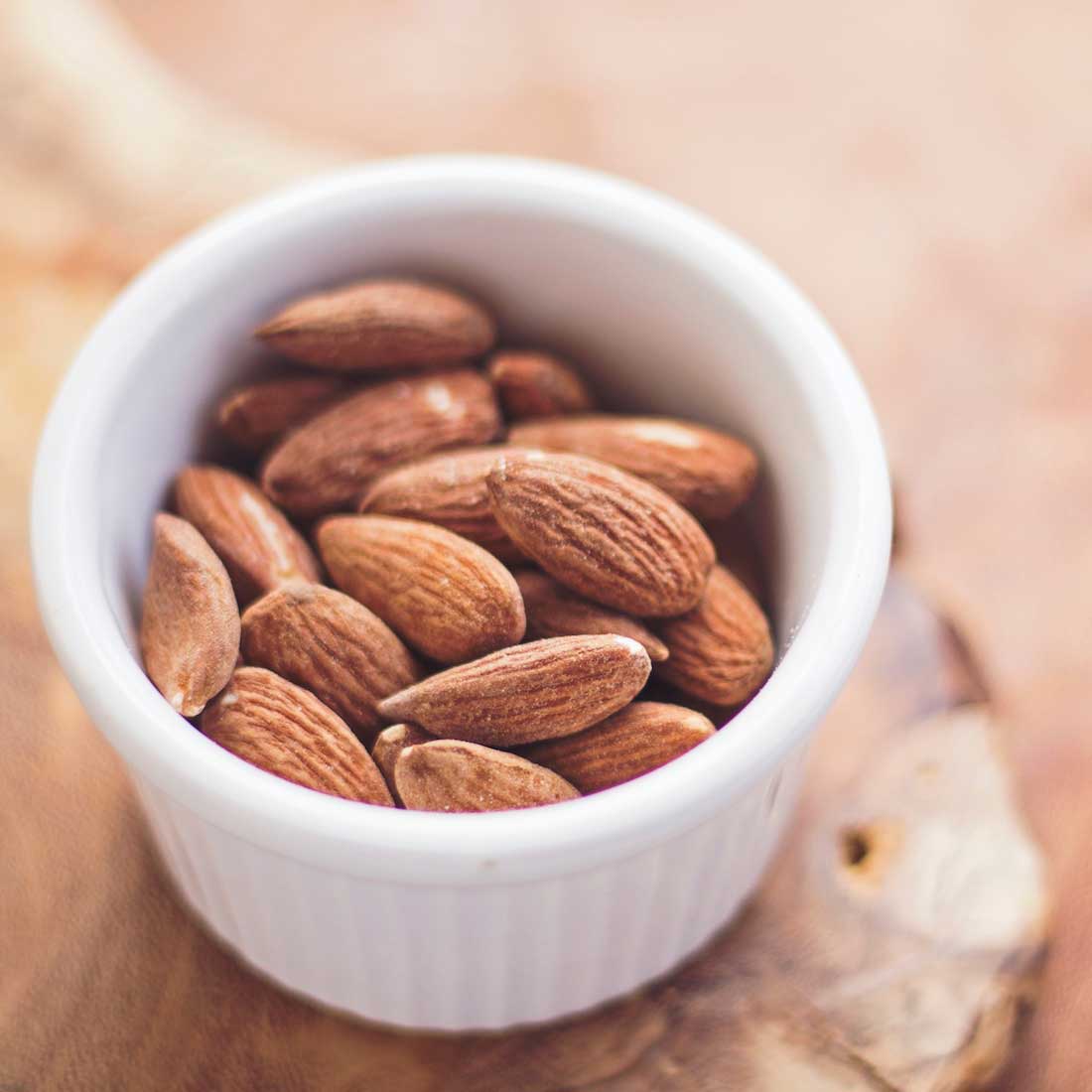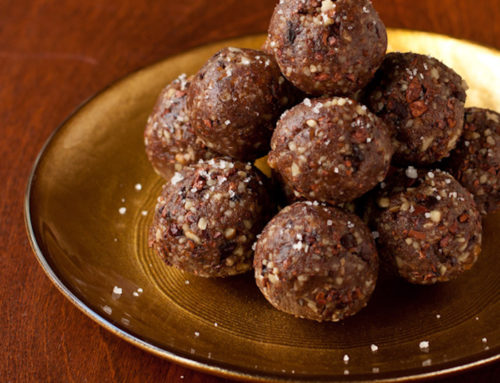Cow’s milk is not a health food. It’s hard to digest, and can increase the risk of certain types of cancer. Many of us are taught to believe that we need to drink milk for strong bones because it’s rich in calcium. And while dairy does contain calcium, many plant foods do as well. So I’d rather skip the cow’s milk altogether, and use this simple homemade almond milk recipe instead.
All you need is some almonds, filtered water, a blender and a nut milk bag (cheesecloth or a fine mesh sieve will also work). You will need to soak your almonds for about 8 hours or overnight. This helps them to absorb water, swell and soften to give you a creamier nut milk. Once you’re ready to make your almond milk, you’ll drain the almonds and rinse them off. Soaking and rinsing the almonds also helps to reduce phytates, a natural compound found in beans and nuts. Phytates can act as an anti-nutrient and block the absorption of minerals in the our digestive tract.
Once you’ve strained your almonds, all you need to do is add them to your blender, alongside the filtered water, and blend until you get a creamy milk. Strain it out through a nut milk bag, and store the milk in your fridge for 2-3 days. You might notice the almond milk will separate a bit in your fridge and that’s perfectly fine. It happens because we’re not using any emulsifying agents like store bought brands do. All you need to do is shake up your milk before you use it, and you’ll have a creamy delicious almond milk made 100% from almonds.
You can actually use any kind of nut to make milk. I just made my first batch using all pecans and wow, that is delicious and creamy. I often use a combination of walnuts and almonds. sometimes I leave the nuts soak for a day or more because I cant get to making the milk: I just keep the nuts in the fridge and it all works out fine.
4 reasons this almond milk recipe is better than your store-bought nut milk
1. It’s cost effective.
Purchasing a bag of bulk raw almonds can help you save money with each batch of almond milk. You can also double your savings by turning your leftover pulp into almond flour. All you need to do is spread the pulp out on a baking tray and let it dry in your oven at the lowest temperature for a couple of hours (you can also use a food dehydrator), then grind it into flour in your blender or food processor and store it in the fridge. Almond flour makes a great gluten free flour substitute for many baking recipes.
2. It’s more nutritious.
When you make this homemade almond milk recipe you know for sure that the milk contains a lot of almonds. Store bought nut milks on the other hand, have been found to contain a very small amount of nuts along with some additives to give you the creamy taste and texture that you’re looking for.
3. There are no additives.
Store bought nut milks often contain additives to prolonge their shelf life and improve the taste and texture. A common one you might see is caragreenan. It’s thickening agent derived from seaweed to help mimic the creamy texture of dairy. However, some animal studies have suggested that it can contribute to inflammation1, intestinal ulceration2 and increased gut permeability.
4. You can flavor it.
If you like the taste of store bought almonds milk because of the different flavor variations that they offer, you can easily adjust this homemade almond milk recipe to match. If you like a sweeter vanilla almond milk, you can add a teaspoon of vanilla extract and a couple of dates to the blender. Or if you prefer chocolate you can use some antioxidant-rich raw cacao plus some dates for extra sweetness and some fiber.
Ingredients
- 1 cup raw almonds, soaked overnight
- 3-4 cups filtered water
Instructions
- Soak raw almonds in a bowl of water overnight.
- Drain the next morning, and add to a blender.
- Add 3-4 cups of filtered water to the blender (depending how creamy you like it)
- Blend on high until you get milk. The almonds should be ground and barely noticeable.
- Pour the milk through a nut milk bag, fine mesh sieve or cheesecloth to drain out the almond pulp.
- Store the milk in a jar, and drink within 3-4 days.
Chew on this
Homemade almond milk is a great replacement for dairy that still tastes great, but if you’re allergic to nuts, you’ll want to avoid almond milk. Instead you can try alternatives like oat milk, rice milk or hemp milk, which can easily be made at home as well.
What is your favorite kind of dairy-free milk? Tell us in the comments below.





